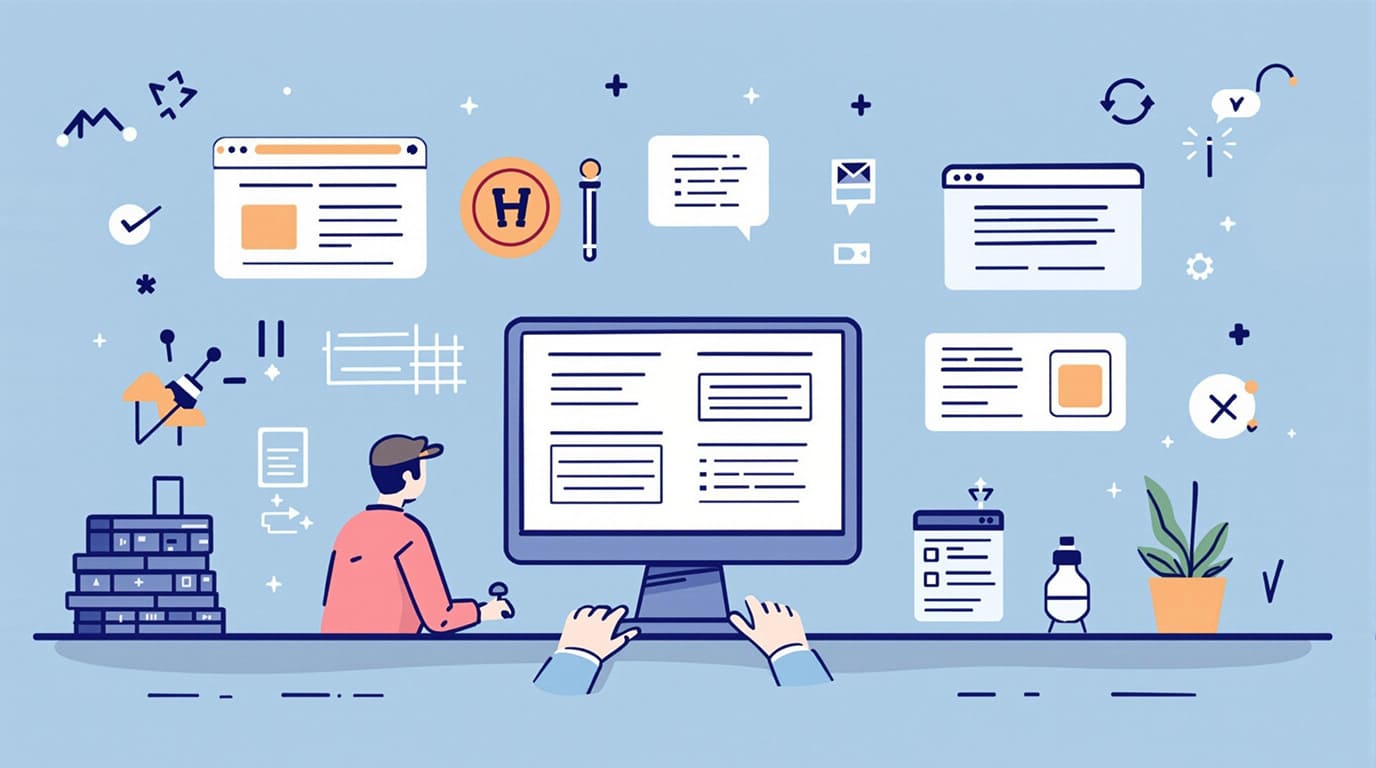Are you struggling to keep your app compliant with ever-evolving data privacy laws like GDPR and CCPA? You’re not alone. Privacy regulations can be complex, and the penalties for mishandling user data are steep. The good news? Implementing strong app data compliance doesn’t have to be overwhelming.
In this guide, you’ll discover how consent management and privacy controls can help you stay ahead, protect your users, and avoid costly violations. By adopting practical, up-to-date strategies tailored for 2025 and beyond, your app can not only meet regulatory demands but also build lasting user trust.
Consent Management: The Backbone of App Data Compliance
What is consent management and why it matters
Consent management is the process of obtaining, recording, and maintaining user permissions for collecting and processing personal data. Under GDPR and CCPA, explicit user consent is a legal prerequisite before your app can handle personal information, making consent management the backbone of app data compliance.
Failing to secure proper consent can result in hefty fines—GDPR violations can reach up to €20 million or 4% of global turnover, while CCPA penalties can be as high as $7,500 per record. Beyond penalties, poor consent practices erode user trust and damage brand reputation.
Best practices for collecting explicit, informed consent
Effective consent management starts with transparency and clarity:
- Clear language: Use easy-to-understand terms free from jargon. Avoid pre-ticked boxes or implied consent.
- Granular options: Allow users to consent separately to different data uses such as analytics, marketing, and personalization.
- Timely consent: Request consent at or before data collection moments, not retroactively.
- Easy withdrawal: Make opt-out processes as frictionless as opt-in, respecting withdrawal promptly.
For example, a 2025 best practice is to integrate context-aware consent prompts that appear precisely when sensitive data is likely to be collected—such as location or biometric info—maximizing transparency and user control.
Tools and technologies to automate consent tracking
Manual consent management creates risk and inefficiency. Utilize modern consent management platforms (CMPs) that offer:
- Consent recording with timestamps
- Automated audit trails for compliance reporting
- Device-agnostic sync to track consent across mobile and web
- Real-time consent change updates
Top CMPs in 2025 often leverage AI to detect changes in user preferences, trigger notifications, and automatically adapt consent prompts to jurisdiction-specific requirements.
Differentiating consent types for EU vs. California users
GDPR requires explicit, unambiguous consent before data processing, with emphasis on prior opt-in and consent renewal for new data uses. Conversely, CCPA mainly focuses on the right to opt out of the sale of personal data, with less emphasis on consent prior to collection but strict requirements on disclosure and opt-out mechanisms.
Apps must detect user location or region and tailor consent flows accordingly: comprehensive opt-in for EU users, clear opt-out and “Do Not Sell My Info” options for Californians, ensuring jurisdictional compliance while maintaining seamless UX.
Privacy Controls: Empowering Users and Protecting Data
Overview of privacy controls and their legal requirements
Privacy controls are the features that allow users to view, edit, and manage their personal data within your app. GDPR’s Article 15 and CCPA’s consumer rights emphasize providing users access to their data, correcting inaccuracies, deleting information, and opting out of certain uses.
Implementing these controls is not only a legal obligation but also a user experience differentiator. Demonstrating respect for user privacy fosters trust and loyalty, especially in a competitive app market.
Features to include: data access, correction, deletion, and opt-outs
At minimum, your app’s privacy controls should allow users to:
- Access: View all personal data collected, including inferred data and sharing partners.
- Correction: Easily update or fix incorrect personal details.
- Deletion: Request removal of personal data, honoring GDPR’s “right to be forgotten” and CCPA’s deletion requests.
- Opt-outs: Manage preferences for cookies, targeted ads, data sales, and third-party sharing.
Offering a downloadable data package is another GDPR-mandated feature worth including, enabling transparency and audit capability for users.
Strategies for integrating privacy settings into app UX
Privacy controls shouldn’t be an afterthought or buried deep in menus. Instead:
- Prominent placement: Include a “Privacy Settings” or “Manage Data” button on your primary navigation or user profile screen.
- Simplified interfaces: Use sliders, toggles, and clear explanations for each control to reduce friction.
- Contextual nudges: Remind users of their options during relevant actions—like before enabling location tracking or syncing contacts.
- Multi-language support: Accessibility ensures compliance and user satisfaction across diverse regions.
A modern strategy also includes periodic in-app privacy reminders, explaining new features or data uses based on app updates or regulatory changes, keeping users informed and in control.
Examples of effective privacy control interfaces
Leading apps in 2025, such as messaging platforms and health trackers, combine clean UX with comprehensive privacy dashboards:
- WhatsApp’s recent privacy settings have shifted to allow granular data sharing controls with clear visual cues and step-by-step guides.
- Fitness apps like Strava allow users to toggle precisely what health data is shared publicly versus kept private, fostering community while respecting privacy.
You can learn from these examples by prioritizing clarity, responsiveness, and intuitive control layouts in your own app.
Navigating GDPR & CCPA: Key Compliance Requirements
Comparing core differences and similarities of GDPR and CCPA
While both laws aim to protect consumer data rights, key distinctions define their application:
| Aspect | GDPR | CCPA |
| Geographic scope | Applies to EU residents and data processors worldwide handling their data | Applies to California residents, regardless of company location |
| Consent requirement | Requires explicit, informed prior consent for data collection and processing | Does not require prior consent, but mandates opt-outs for data sales |
| User rights | Access, correction, erasure, data portability, restriction, objection | Access, deletion, right to opt-out of sale, non-discrimination |
| Penalties | Up to €20 million or 4% of annual global turnover | Up to $7,500 per violation, plus private right of action |
| Breach notification | Within 72 hours of breach awareness | Without unreasonable delay, generally within 45 days |
Understanding these nuances helps you construct compliant data workflows and set correct expectations in your app’s UX and backend.
Obligations for personal data collection, storage, and sharing
Both GDPR and CCPA require:
- Transparency: Clear privacy policies detailing what data is collected, for what purpose, and with whom it’s shared.
- Limitation: Only collect data necessary for stated purposes (“data minimization”).
- Security: Implement reasonable technical and organizational measures to safeguard data.
- Data subject rights: Enable users to inspect, amend, restrict processing, or delete their data.
Compliance extends to third-party integrations—ensure that APIs, SDKs, and ad providers follow equivalent standards and provide data processing agreements.
Breach notification protocols and timelines
Responding quickly to data breaches is critical:
- Under GDPR, notify the supervisory authority within 72 hours of becoming aware of a breach affecting personal data.
- CCPA requires notification “without unreasonable delay” and typically within 45 days of discovery.
Your app should implement incident response plans that include:
- Immediate breach detection and containment
- Impact assessment to classify breach severity
- Transparent communication with users and regulators
- Detailed recordkeeping for audits
Documentation and audit trail essentials
Maintaining thorough records is integral to compliance:
- Consent logs with user identity, consent date, and scope
- Privacy policy versions and change logs
- Records of data processing activities (DPIA reports)
- Breach investigation reports and notifications
Utilizing modern compliance management software can automate audit trail creation, simplifying regulatory reporting and internal reviews.
Advanced Compliance Strategies and Emerging Trends
Leveraging AI for enhanced consent and privacy automation
In 2025, AI-driven compliance tools increasingly dominate the app data compliance landscape. AI can:
- Analyze user behavior to tailor consent requests without overwhelming users
- Detect discrepancies or lapses in consent coverage automatically
- Monitor third-party data flows for unauthorized use
- Predict regulatory risks based on emerging data patterns
For example, AI can dynamically adjust privacy prompts based on user engagement metrics, providing a smoother consent experience while maintaining strict compliance.
Real-time data monitoring for proactive compliance
Rather than relying solely on periodic audits, next-gen apps employ real-time monitoring dashboards to:
- Track data usage anomalies and suspicious activity
- Verify third-party API compliance continuously
- Alert compliance teams instantly about potential violations
This proactive stance reduces breach risk and minimizes reaction time, crucial in today’s fast-paced app ecosystem.
Upcoming privacy regulations to watch
While GDPR and CCPA lead the way, new regulations are emerging globally, including:
- CPRA (California Privacy Rights Act): Expands CCPA with stricter data handling and enforcement starting 2025.
- Virginia Consumer Data Protection Act (VCDPA): Introduces CCPA-like protections on the US East Coast.
- Eprivacy Regulation (EU): Expected to complement GDPR with enhanced cookie and electronic communication standards.
Staying informed about these laws enables forward-looking compliance that keeps your app ready for evolving requirements.
Building a culture of privacy-first app development
Beyond technical measures, embedding privacy into your development lifecycle pays dividends:
- Train developers on privacy-by-design principles and legal requirements
- Conduct Privacy Impact Assessments (PIAs) for new features
- Engage users with transparent communication about data practices
- Foster cross-team collaboration among legal, security, and product teams
This culture ensures compliance is not an afterthought but an integral part of your app’s DNA.
Conclusion
App data compliance with GDPR and CCPA is no longer optional — it’s essential for building trust and avoiding penalties. By focusing on robust consent management and user-centric privacy controls, you position your app for long-term success. Achieving seamless compliance demands continuous adaptation alongside evolving laws and technologies.
When it comes to navigating this complex landscape, WildnetEdge stands out as a trusted partner offering cutting-edge solutions to simplify compliance and protect your user data. Ready to make your app compliant and privacy-forward? Connect with WildnetEdge today to stay ahead in the data privacy game.
FAQs
Q1: How can I implement effective consent management for GDPR and CCPA compliance?
Focus on obtaining explicit, informed consent, provide clear opt-in/out options tailored to user location, and use automated tools to track and store consent records securely for audit purposes.
Q2: What privacy controls are mandatory for apps under GDPR and CCPA?
Apps must enable users to access their data, correct inaccuracies, request data deletion, and opt out of data sales or targeted marketing, ensuring these controls are easy to find and use.
Q3: What are the main differences between GDPR and CCPA app compliance requirements?
GDPR mandates explicit prior consent and applies mainly to EU residents, while CCPA focuses on consumers’ rights to opt out of data sales, applying primarily to California residents.
Q4: How often should my app update its privacy policy for compliance?
Review and update your privacy policy regularly, especially when legal requirements change or your app alters its data processing practices, to maintain transparency and user trust.
Q5: Can AI improve app data compliance and consent management?
Yes, AI can automate consent collection, analyze user privacy preferences, monitor compliance in real time, and reduce risks of violations while enhancing the user experience.

Nitin Agarwal is a veteran in custom software development. He is fascinated by how software can turn ideas into real-world solutions. With extensive experience designing scalable and efficient systems, he focuses on creating software that delivers tangible results. Nitin enjoys exploring emerging technologies, taking on challenging projects, and mentoring teams to bring ideas to life. He believes that good software is not just about code; it’s about understanding problems and creating value for users. For him, great software combines thoughtful design, clever engineering, and a clear understanding of the problems it’s meant to solve.
 sales@wildnetedge.com
sales@wildnetedge.com +1 (212) 901 8616
+1 (212) 901 8616 +1 (437) 225-7733
+1 (437) 225-7733































